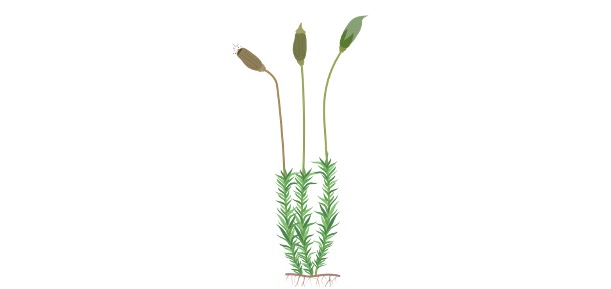Table of Contents
Biogenesis Definition
Biogenesis states that another life originates from a living entity, which is similar to one existing and not from non-living entity. Although this theory was not accepted, as people believed in spontaneous generation theory, which says that life could originate from non-living entities as well.
For instance, they believed an organism like mice could be generated from inanimate entity. Another example is the generation of maggots from meat which is spoiled, is the spontaneous generation theory.
What is Biogenesis Theory?
Spontaneous generation theory was believed by various people, including scientists like Aristotle that without any mating or transfer of gene, a living entity could be produced. In his “History of Animals” book he said that animals could results due to fusion of gametes as well as those who cannot, will grow spontaneously.
Thus, from a non-living entity a living entity could originate. This can also be called as abiogenesis. However, spontaneous generation is no longer believed and with the development of technology and advancement in science, the spontaneous generation theory was nullified and Louis Pasteur’s evidence explained that livings entities could arise from living entities only and not from non-living organism.
Thus, this theory was believed and is known as theory of biogenesis. Although abiogenesis was rejected, its modern version is yet believed as the place where life began which is the planet Earth was made from inanimate matter like the organic compound and these things have not been elaborated at that time in their characteristics, function and structure.
It took millions of years for the origination of living entity from inanimate. However, with the further diversification of life, more emphasis is been given on living organisms. As spontaneous generation required a shorter time duration, modern abiogenesis theory took millions of years.
Biogenesis is the reversal of spontaneous generation theory, where living forms originates from living organism and the term biogenesis was coined between 1837-1915 by Henry Charlton Bastian, and substituted theory of spontaneous generation with biogenesis.
When speaking about theory of spontaneous generation, abiogenesis is to be used was given by Thomas Henry Huxley between the time-period 1825-1895. Univocal generation is the process in which from same parent species, the offspring has arisen and in equivocal generation, the offspring produced is not from same species, and might not have originated from sexual mode of reproduction. For instance, tapeworm, which is thought to be originated from host.
Biogenesis and Reproduction
With the biogenesis theory, its clear that living organism originates from living entities only and not from inanimate object. There are two reproduction types: sexual and asexual reproduction.
In asexual reproduction, gametes aren’t involved and the modes of asexual reproduction are budding, apomixis, fragmentation, binary fission, parthenogenesis, spore formation and vegetative reproduction. Asexual mode of reproduction is used by prokaryotes, although some plants and animals which are eukaryotes also undergo asexual mode of reproduction.
In asexual reproduction, clones are created, as only a single parent produces the offspring. Prokaryotes are unicellular organism, which will undergo sexual reproduction by translocating DNA from one cell to the other. The translocation of DNA can occur in two ways; either through transformation, where the DNA is transferred to the other bacteria’s chromosomes.
Another way is conjugation, where the DNA is passed through a bridge formed between two cells called the pilus and gets incorporated into the other bacteria. As a result of evolution and adaptation, organism have evolved themselves from unicellular to multicellular, so that they can thrive in varying environment. And further these multicellular organism have diversified forming vertebrates and humans.
Within the humans, there exist two types of cells, the somatic and the sex cells. There are 22 pair of somatic cells and 1 pair of sex cells, which consist of the gametes, the sperm and the egg which are engaged in reproduction.
Thus, in sexual reproduction, male and female gametes fuse resulting in a zygote which is diploid and result in offspring. However, male and female sex cells are formed in one body and organism with only one of them are called dioecious.
In animals, reproduction begins by finding a mating partner, and courtship is seen in animals. To obtain a mate, natural selection also comes into picture as they need to prove their superiority to get the mate. There are species which can fluctuate between sexual and asexual reproduction, they are known as heterogamy.
History of Biogenesis Theory
Spontaneous generation theory was believed by various people, including scientists like Aristotle that without any mating or transfer of gene, a living entity could be produced. In his “History of Animals” book he said that animals could results due to fusion of gametes as well as those who cannot, will grow spontaneously.
However, Aristotle’s work was refused by Francesco Redi, which proved that from the fly’s eggs in the meat, maggots were generated. A similar work was carried out by Pier Antonio Micheli, where on the melon he dropped some fungus spores, resulting in the production of fungi, which further outlifted that theory of spontaneous generation was obsolete, but was yet believed until Louis Pasteur experiment proved it.
In between the time around 1822-1895, when Pasteur was working on fermentation, vaccines and pasteurization, he said that flasks which were packed and sterilized did not show any growth, but when these sterilized flasks were open, microbes did grow.
For fermentation he used, swan-neck flask containing broth, so that air could pass through but the particles would attach to the curving tube and couldn’t reach the broth, thus no growth taking place and if the flask was tilted it would touch the area on which particles has attached resulting in contamination and growth of microbes.
Thus, through this experiment it can be concluded that broth got contaminated because of the dust particles. Thus, the theory of spontaneous generation was rejected and the theory of biogenesis was accepted globally.







